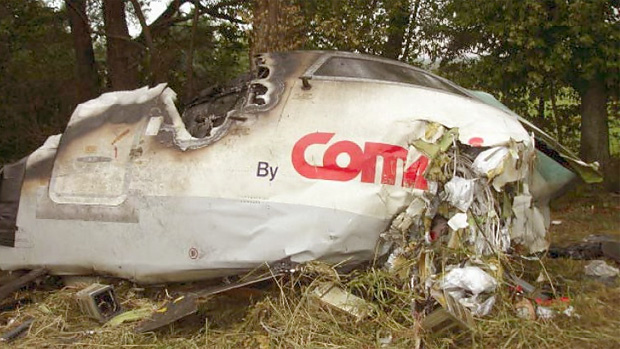Coming back to Minneapolis following a talk last week to the WebEOC Users Conference in Denver, I was reminded of a Viewpoint editorial I wrote for Aviation Week about the danger of collisions among aircraft maneuvering along airport runways. Our 737 was on final approach at MSP International Airport, wheels down and flaps deployed, maybe thirty feet off the ground, when the crew abruptly poured on the power, cleaned up the aircraft, and started climbing. A brief comment from the crew over the intercom explained later that another airplane hadn't cleared the runway as expected, so they executed a go-around. A good thing!
On the subject of crashes on airport grounds ... Station WKYT in Kentucky yesterday posted a segment of documentary interview with James Polehinke, who was first officer when Comair Flight 5191 crashed in August 2006 during an attempt to take off from the wrong runway at Blue Grass Airport west of Lexington, Kentucky.
Here's a diagram from USA Today:
Pulled from the wrecked Bombardier regional jet with serious injuries, Polehinke was the only survivor. Deaths totalled 47 passengers and two crew. Here's the nose:
Production of the documentary, Sole Survivor (slated for release in August), is the first time Polehinke has talked publicly about the crash almost six years ago. Relatives of those who were killed say they would like to hear more from him. Here's one of the few pictures of Polehinke that was available before the show's publicity:
The show's director has been seeking out 17 sole survivors from airplane crashes.
One of the central figures in the documentary will be George Lamson, the only person who survived the crash of Galaxy Airlines Flight 203 at Reno, Nevada, in 1985. (That Lockheed L-188 crash was chiefly due to distraction among the flight crew, caused by the slamming of an air-start access door that the ground crew hadn't secured before takeoff.)
How did the Bombardier come to earth? Human error. While verbally acknowledging instructions from the tower to take off from Runway 22, instead the crew turned onto 26 that morning. It was a strip intended for general aviation, and too short for the regional jet to reach takeoff speed. The plane's gear made tire tracks along the grass beyond the runway, bounced briefly into the air after hitting a berm, then crashed upon hitting trees.
As with most disasters there were multiple causes of Comair 5191's crash, and not all happened on the flight deck. The layout of runway thresholds was confusing, and construction made it more difficult. There was only one controller on duty at the time; busy with managing his records, he wasn't looking out the tower window when he could have spotted the error.
One chilling factor that jumps out from the NTSB's final report and the CVR transcript is the prolonged and lighthearted talk on the flight deck about personal matters: family, off-duty activities, and career plans. The captain and first officer did get through the checklist, but the aviation talk was frequently interrupted by non-aviation chatter. The cockpit is supposed to be free of such distractions.




No comments:
Post a Comment